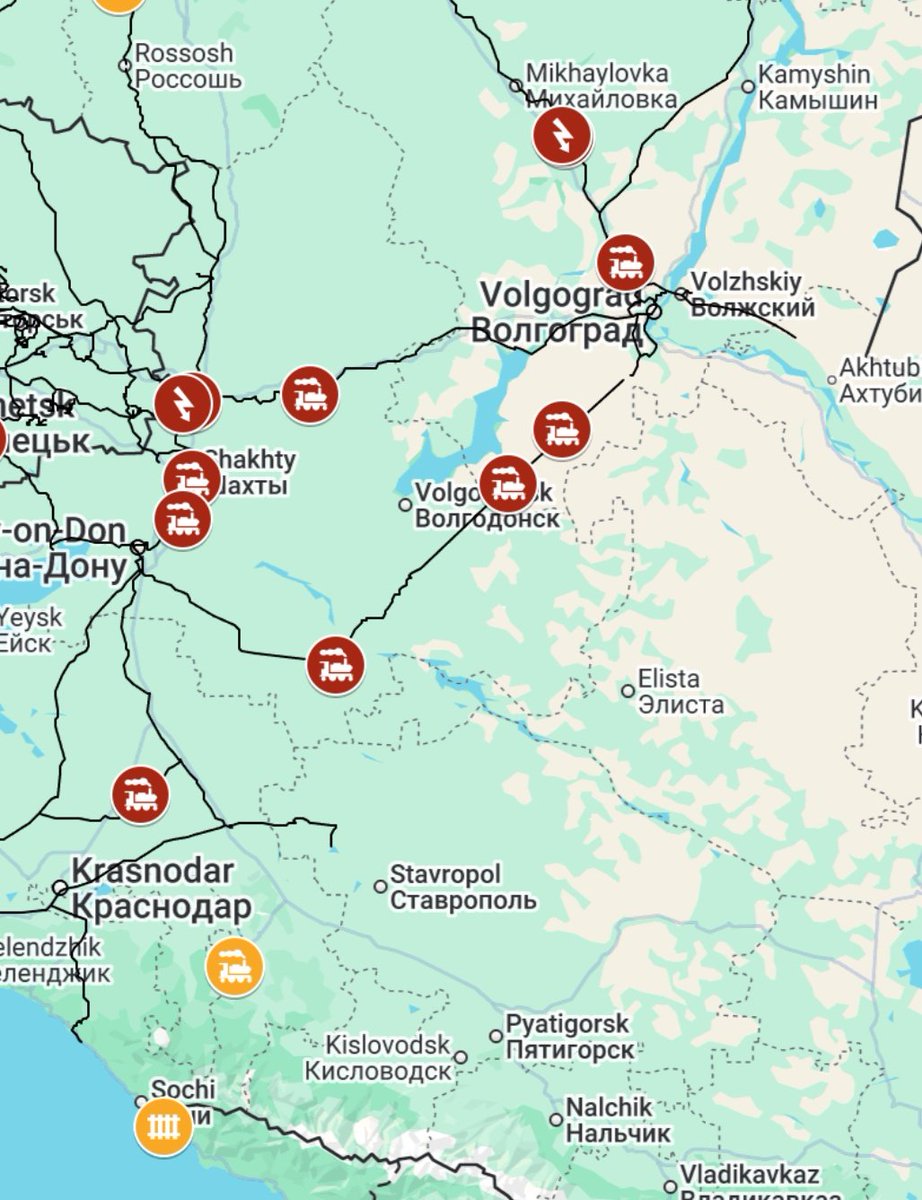Why Sudzha axis of attack by Ukraine? A short thread.
First terrain taking the localized high ground can give them fire control over insanely critical GLOC for the 🇷🇺 Task Group North. Which will be highlighted in later tweets.
First terrain taking the localized high ground can give them fire control over insanely critical GLOC for the 🇷🇺 Task Group North. Which will be highlighted in later tweets.

The Sudzha axis sits one of the primary rail lines that goes to Belgorod which is the main logistics depot for Task Group North in Kharkiv. Having direct fire control over this rail line shutting it down.




Economic and Energy factors, the natural gas pipeline that flows to Hungary enters Ukraine at Sudzha this line has been shut off by the Russians since the beginning of the war, though taking this junction would be a useful propaganda victory to leverage against 🇷🇺 and 🇭🇺




Defensibility the terrain in conjunction with pre-made defensives if 🇺🇦 throws its weight into this, it will be difficult to dislodge, along with once again having that fire control over a critical GLOC will degrade 🇷🇺 logistics and supplies to Task Group North in Kharkiv.






Task group North was split into 4 different smaller groups and the northernmost portion was staging at Sudzha which now puts pressure on Russia's flank for this entire task force along with severing a critical GLOC for the entire Task Force.
https://x.com/Schizointel/status/1795228585755652494?t=hBORhAajzkL1NR3CfqRUSA&s=19
If 🇺🇦 throws its weight on this axis and pushes for Sudzha the logistics for the entire task group North becomes significantly strained, particularly when it comes to the movement of significant quantities of equipment and supply by the ZHV via the Russian railroads.
The Line from Oryol to Kursk was knocked offline over months ago and has been regularly by OWA-UAV's. Taking Sudzha cuts the line from Lgov to Belgorod this effectively makes the only way to supply Task Group North along a single track.
This single route left several starting points such as either comes from Bryansk or Voronezh doesn't matter where, the line bottlenecks and only option left is Bulanets to Belgorod.
Green shows single route.
Orange is offline Oryol line
Red is Lgov line
Grey old tracks.
Green shows single route.
Orange is offline Oryol line
Red is Lgov line
Grey old tracks.

Older thread on Oryol line traction stations.
https://x.com/Schizointel/status/1786038014763766139?t=gHzNsP6G9ULZ49WAXNGoFw&s=19
Last note, for now you might say there's no way Russia is operating freight rail mere kilometers from the Ukrainian border and I present to you the Tsar train which at its closest point operates 5 mi from the line of contact. This line has operated for over a year.
https://x.com/Schizointel/status/1786494078974132506?t=gHzNsP6G9ULZ49WAXNGoFw&s=19
CORRECTION the LNG pipeline in Sudzha is still operational that is my bad. This morning reports are Ukraine has taken control of the metering station.
https://x.com/AlexKokcharov/status/1821149244096434642?t=PYnG-voctaSNMyYE-z6DwQ&s=19
@tom_bike always does amazing independent work. Looking at combat related fire from satellite imagery and is able to corroborate some of the mapping that has been done on alleged Ukrainian advances in Sudzha sector.
https://x.com/tom_bike/status/1821175602805608665?t=c6RuNY-vNGj4NMUN6qkimw&s=19
Something to also keep an eye on that's happening further south on the opposite end of the front lines trains are being attacked with fpv drones. We did see an fpv drone attack on a Russian train in Kursk in June
https://x.com/Schizointel/status/1821229381961830886?t=2I79j7ECSZ-0kcjo_p4VFA&s=19
The rail bridge just south of Sudzha at 51.191316,35.340380 was blown up May 1st 2022 and restored by May 4th 2022 and has been operational since bringing Russian military supplies down to Belgorod
https://x.com/Ipster_FI/status/1521845058546327552?t=bG6wmbavCQ7-rWT1dog8mg&s=19
Lgov to Sudzha to Belgorod rail line is part of The Primary Railway network of former USSR. Imagine this like a Rail Interstate Highway Network connecting all of the former USSR.
Primary Railway is denoted by thicker red lines.
Blue arrow is Sudzha.
Information from @barleybird
Primary Railway is denoted by thicker red lines.
Blue arrow is Sudzha.
Information from @barleybird

As people are looking back for signs that may have been missed on the preparation for this offensive this convoy getting attacked might be one of them
https://x.com/Schizointel/status/1810384223372497373?t=nShCBpHRyC66WK0V_7UaYg&s=19
Great set of threads on a more tactical picture
https://x.com/DevanaUkraine/status/1821194896201368001?t=YnwXU2IlfFIhM_snuD3R6Q&s=19
• • •
Missing some Tweet in this thread? You can try to
force a refresh











